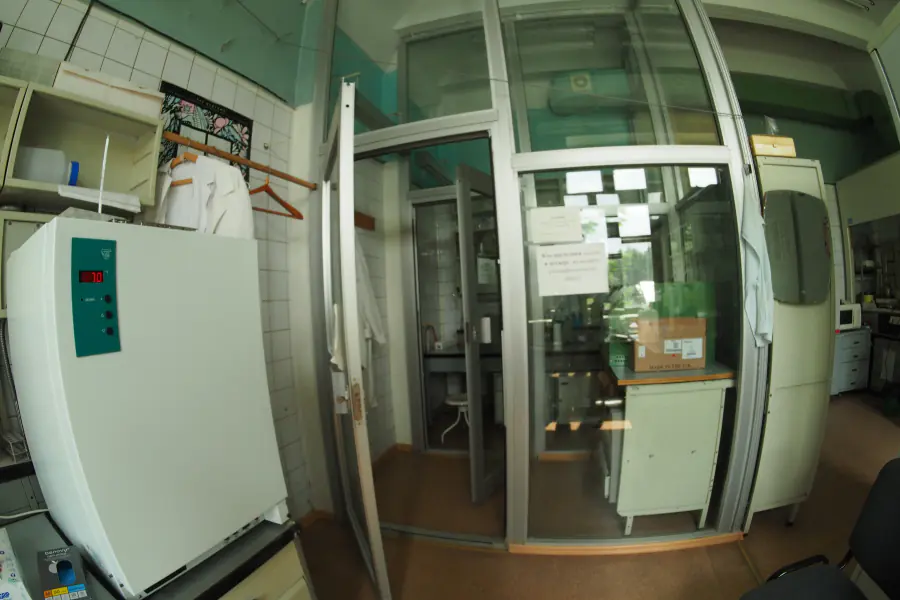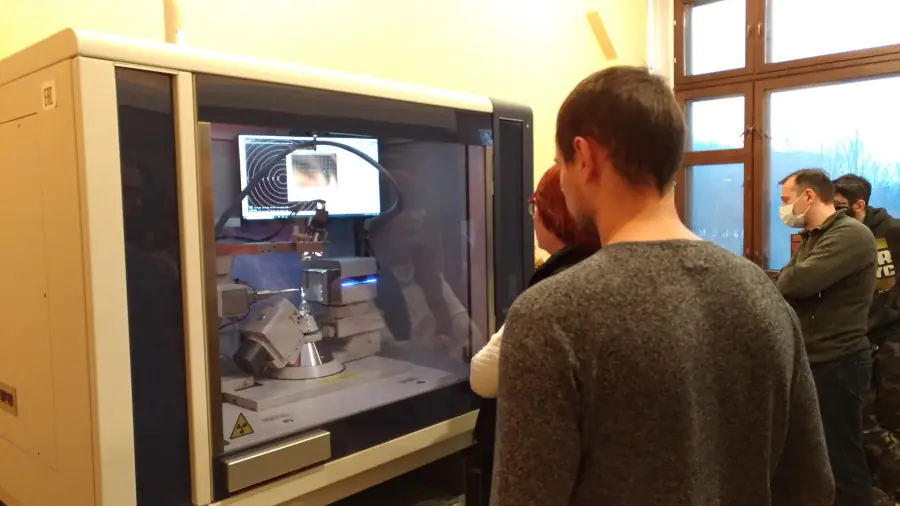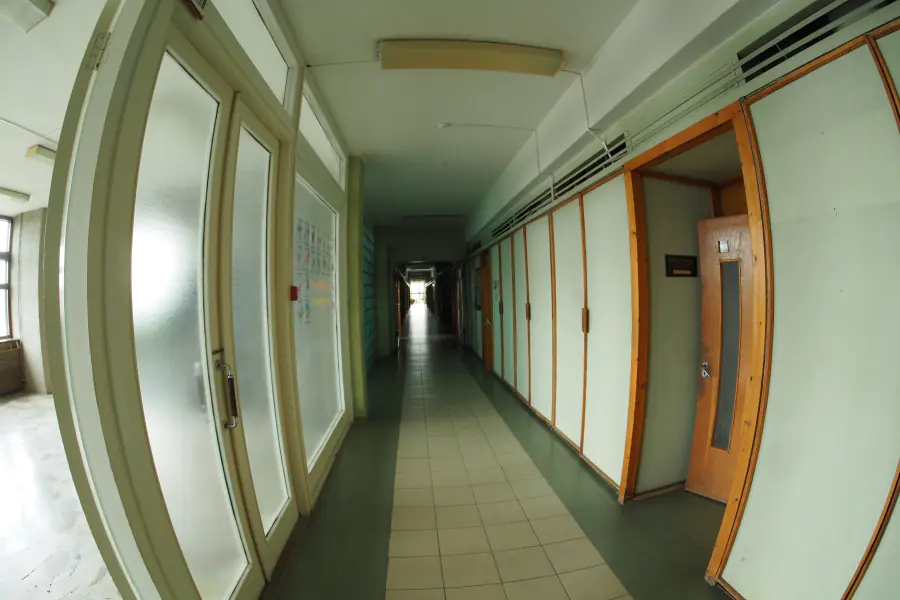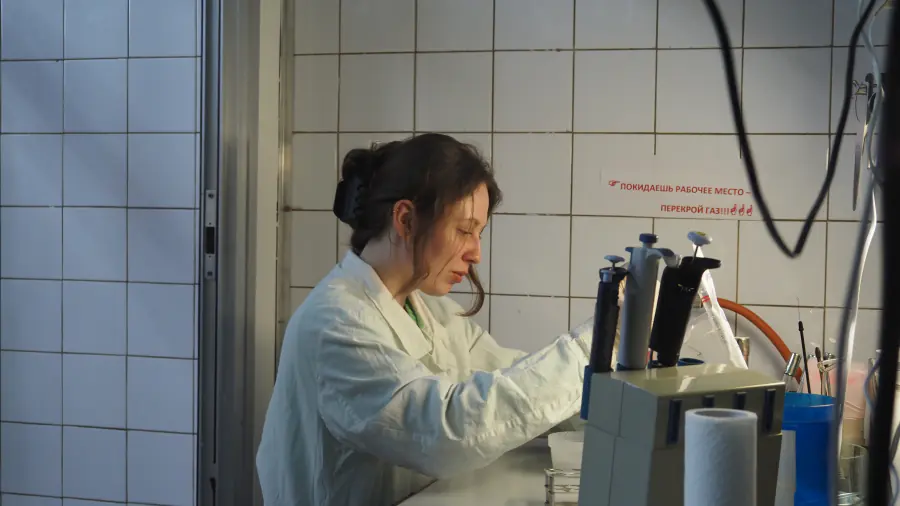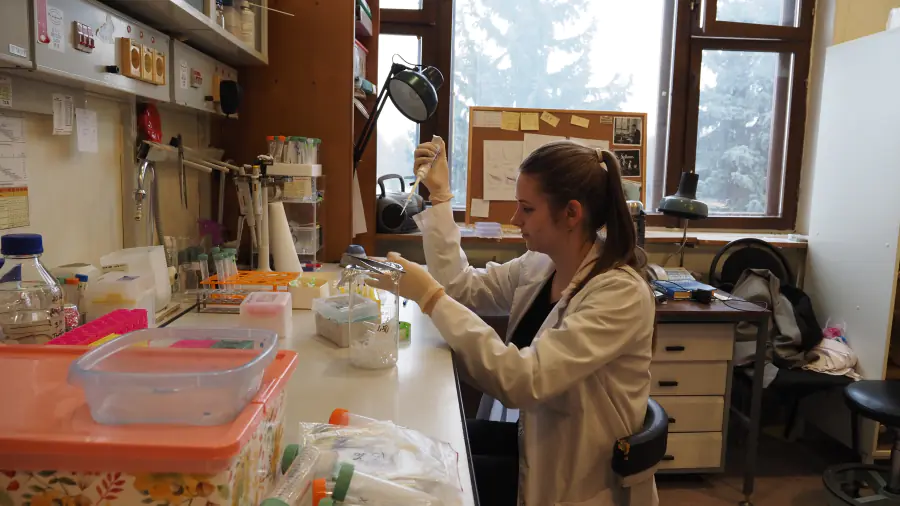Laboratory of structural studies of the broadcasting apparatus
Publications
76
Citations
1 376
h-index
21
Authorization required.
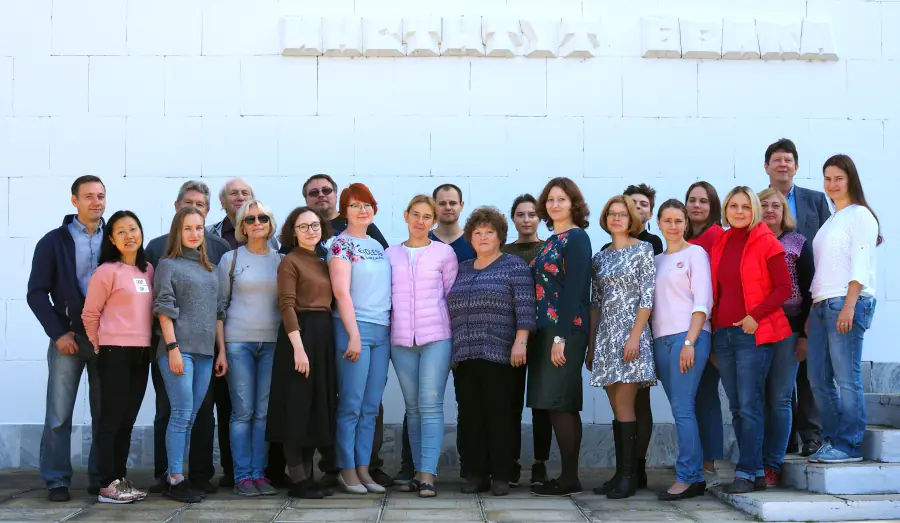
Structural and functional studies of the components of the translation apparatus, determination of the structures of proteins and RNA-protein complexes, the use of X-ray crystallography.
- X-ray diffraction analysis
- Surface plasmon resonance
- Column chromatography
- Gel penetrating chromatography
- Crystallization
- Spectrofluorometry
- Fluorescence
- Gel electrophoresis
Aleksey Nikulin
Head of Laboratory

Svetlana Tishchenko
Leading researcher

Olyga Kostareva
Senior Researcher

Oleg Nikonov
Senior Researcher
Ekaterina Nikonova
Senior Researcher
Olesya Kravchenko
Senior Researcher

Natalia Lekontseva
Senior Researcher

Ulyyana Dzhus
Researcher

Elena Maksimova
Researcher

Alisa Mihaylina
Researcher

Natalyya Leonova
Engineer
Vladimir Andreytsev
Senior Assistant

Viktoriya Kolesnikova
PhD student
Research directions
Interaction of putative Mycobacterium tuberculosis RNA chaperones with RNA
+
Regulation of gene expression by trans-encoded small regulatory RNAs (mrrnas) is a dynamically developing field of molecular biology. A large number of M. tuberculosis mrrnas have been identified using bioinformatics (comparative analysis) and genomics (RNA-seq, etc.), but only for some of them their functional significance has been reliably confirmed. In most bacteria, an important role in the functioning of mrRNA is played by so-called RNA chaperones - proteins that promote the interaction of mrRNA with mRNA due to their function to destroy (melt) the secondary structure of RNA molecules and ensure direct contact of two RNAs on the surface of the protein. The functioning of RNA chaperones in a number of gram-negative and gram-positive bacteria is being actively investigated, but their possible participation in the regulation of gene expression in mycobacteria has not been practically studied.
Identification of LepA-dependent mRNAs using selective ribosomal profiling to determine the function of the ribosome-dependent GTPase LepA in bacteria
+
The project is aimed at solving one of the fundamental problems of molecular biology - the elucidation of the function of the highly conservative and universal ribosome-dependent GTPase LepA. In eukaryotes, LepA is necessary for the biogenesis of vital organelles - chloroplasts and mitochondria. Disruption of LepA inhibits photosynthesis in plants and leads to male infertility in mice or cancerous cell transformation in humans, followed by aggressive metastasis, a rather heterogeneous spectrum of effects is revealed in bacteria. The absence of general criteria for combining the diversity of secondary effects caused by a violation of the functional activity of LepA does not allow us to understand the function of this protein.
We propose to apply a rare but rather effective modification of modern ribosomal profiling technology – selective ribosomal profiling for the study of bacterial LepA in translation, which has not been previously used for the study of LepA, but is successfully used in laboratories abroad in research of translational factors. This approach will make it possible to select ribosomal complexes associated with the LepA protein from Escherichia coli cells. Comparison of ribosomal profiling of the lepA strain and profiling of ribosomes selected using antibodies to LepA from wild-type strain cells will allow us to detect a set of mRNAs whose translation efficiency really depends on LepA and determine their features. Moreover, selective ribosomal profiling helps to determine the translation stages that take place with the participation of the protein of interest by mapping the position of LepA-bound ribosomes on such matrices.
The results obtained can be extrapolated and used to explain the secondary effects caused by the disruption of LepA in mice, humans and plants. By understanding the molecular mechanisms of the LepA protein, it is possible to develop ways to reduce the secondary effects caused by its increased expression in tumors.
Susceptibility factor eIF4E: mutations rational design and obtaining of potato virus Y resistant plants
+
In this project, we plan to study one of the most important aspects of the life of cultivated plants, namely their reaction to viral infection. The emergence of plant virus resistance and its overcoming by a virus is a constant evolutionary process. In the case of cultivated plants, this process awareness is of great importance for both fundamental and applied science, because phytopathogens of viral nature represent one of the most significant threats to human food security. Despite the active scientific research in this field, there is still no clear understanding of the molecular mechanisms underlying the formation and overcoming of virus resistance in plants. As an object of research, we chose representatives of the Solanaceae family, which includes many agricultural crops and potato virus Y, which is one of the most common and harmful viral pathogens for these plants.
A critical moment in the development of viral infection in a plant cell for potato virus Y is the interaction of the VPg protein with eIF4E of the host cell. The VPg functionally imitate cap structure and is covalently bound to viral mRNA. During the initiation of viral mRNA translation, this protein recognizes and associate with plant initiation translation factors 4E (eIF4E). Thus, without the formation of a specific and stable complex of VPg with the cap-binding factor of the host cell, the virus life cycle will be interrupted. It should be noted that in different plants there are different numbers of isoforms of proteins of the eIF4E family. The reason of such diversity is still not entirely clear. It is known that the target for the virus is usually only one isoform. And if this isoform no longer interacts with VPg during the formation of virus resistance, VPg can switch to using another isoform of the plant cap binding factor or compensate for the occurrence of resistance by the appearance of amino acid substitutions in its sequence. At the moment, there is no experimental data that allows us to consider in detail the interaction of proteins of the eIF4E family and VPg from a structural point of view at the level of studying formed intermolecular interfaces. Moreover, such information is extremely lacking both for single plant factors and for viral proteins. Biochemical data allowing to do an exhaustive analysis of the specificity and strength of complexes formation, are also clearly insufficient at the moment. This work is designed to fill in these gaps. As a result of the project, the molecular mechanism of interaction of eIF4E representatives of Solonaceae with VPg will be determined, and genetically edited plants will also be obtained.
New approaches in studying mechanisms of translation using cryo-electron microscopy
+
The project is aimed at important scientific problems: the study of translation regulation and ribosome biogenesis, because these processes ultimately determine the state and function of each living system (cell or organism). Regulation of gene expression using small regulatory RNAs (smRNAs) and RNA chaperones is widespread in pathogenic bacteria and is often activated under external stresses (including exposure to antibiotics), regulates the expression of virulence genes, quorum sensing, and biofilm formation. For the first time, we plan to get a detailed model of this type of regulation based on cryo-EM structures of various complexes formed at the stages of regulation of mRNA translation by smRNAs and RNA chaperone Hfq. This will fill in the existing gaps in the proposed models and identify new possible targets for influencing gene expression in bacteria, including pathogenic ones. In addition, we propose to identify the role of the RimJ protein in the biogenesis of bacterial ribosomes at the structural level using cryo-EM analysis. Such results contribute to the advancement in the understanding of a poorly understood fundamental process as ribosome biogenesis, allowing the next discovered protein factor of ribosome maturation to be integrated into a complex network of participants in this process. The ability to regulate ribosome biogenesis, a vital cell process, opens up quite a good prospects in the search for new targets for antibacterial drugs.
Publications and patents
Found
Nothing found, try to update filter.
2024
—
2025
| Никулин Алексей Донатович
2024
—
2025
| Столбоушкина Елена Александровна
2018
—
2020
| Никулин Алексей Донатович
2017
—
2019
| Костарева Ольга Сергеевна
2015
—
2017
| Гарбер Мария Борисовна
2014
—
2016
| Никулин Алексей Донатович
Lab address
Московская область, г. Пущино, ул. Институтская, 4, Институт белка РАН
Authorization required.





